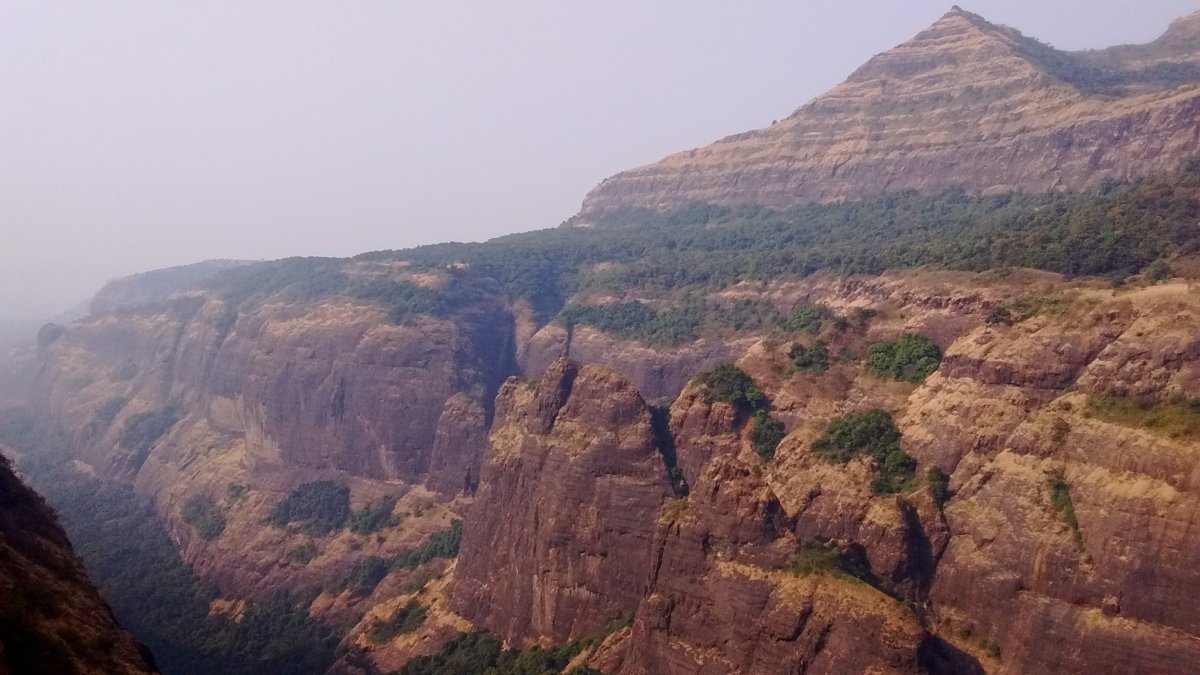Sixty-six million years ago all the non-avian dinosaurs went extinct. We know this because of the abrupt end to the fossil record for these creatures—one geological moment they were there, the next they were not.
Around the same period, a huge asteroid hit Earth in what is now the Yucatan Peninsula, Mexico. And on the other side of the world, an enormous volcanic field had been erupting for hundreds of thousands of years, expelling vast quantities of magma and climate-altering gasses into the atmosphere.
How these three events fit together has been the subject of scientific debate for decades—and researchers now generally agree that a combination of the two catastrophes were involved in the extinction of the dinosaurs. To what extent each contributed to their demise is still unclear.
In two studies published in Science, researchers have constrained the dates of volcanism at the Deccan Traps in India—a site of intense volcanism that lasted for tens if not hundreds of thousands of years. In the papers, scientists used different dating techniques to work out the when the eruptions were happening in comparison to the asteroid impact.
In one paper, Princeton's Blair Schoene and colleagues used uranium-lead dating to produce a timeline of eruptions. Radioactive isotopes of uranium that are trapped in zircon start to decay as soon as the mineral crystalizes, transforming into lead at a known rate.
After looking at nine samples from the Deccan Traps, the team concluded that there were at least four major eruptive pulses, lasting around 100,000 years each time. They say the first eruption phases started long before the asteroid impact, with huge quantities of methane, carbon dioxide and sulfur dioxide released over hundreds of thousands of years.
This, they argue, would have been enough to trigger a mass extinction long before the asteroid struck. With dinosaurs already on the decline, the asteroid impact could have finished them off.

However, the other paper, by Courtney Sprain from the U.K.'s University of Liverpool, uses an argon-argon dating technique that looks at the rate the gas was released from the Deccan Trap samples. In this paper, the team find that most of the volcanism took place 600,000 years after the meteor impact, meaning the eruptions could not have been the primary cause of the dinosaur extinction. Sprain and her team conclude that the asteroid impact likely helped trigger the volcanism—a finding that raises more questions than it answers.
About 40,000 years before the impact event, there was a period of global warming that saw temperatures rise by around eight degrees Celsius. The researchers suggest the warming could have been caused by the release of volcanic gasses at the site, without eruptions actually taking place.
They argue that the asteroid impact could have caused mega-earthquakes that triggered the volcanism at Deccan Traps—which is almost directly opposite the Yucatan impact site. If this happened, the asteroid would have been the primary cause of the extinction, with the volcanism delivering the final blow.
"Both the impact and Deccan volcanism can produce similar environmental effects, but these are occurring on vastly differing timescales," Sprain said in a statement. "Therefore, to understand how each agent contributed to the extinction event, assessing timing is key."
In a perspective article, Seth Burgess, of the USGS, who was not involved in either study, said that as more accurate dating models are developed, we are getting a better, more precise view of the dinosaur-killing mass extinction event. "A broad consensus on a single trigger of mass extinction…[has] changed into a keen debate between two potential killers… As the scientific community gains a clearer picture of the causes of rapid, major changes to the ocean and atmosphere systems, we simultaneously progress in our understanding of the response of life to these changes, both in deep time and today."

Uncommon Knowledge
Newsweek is committed to challenging conventional wisdom and finding connections in the search for common ground.
Newsweek is committed to challenging conventional wisdom and finding connections in the search for common ground.
About the writer
Hannah Osborne is Nesweek's Science Editor, based in London, UK. Hannah joined Newsweek in 2017 from IBTimes UK. She is ... Read more
To read how Newsweek uses AI as a newsroom tool, Click here.








